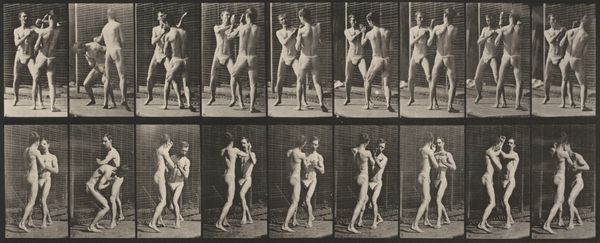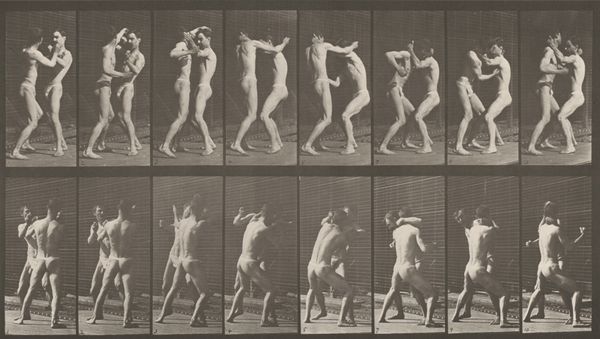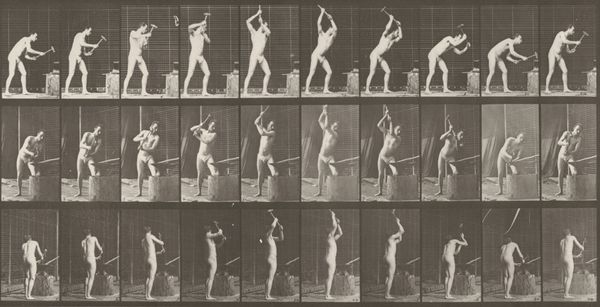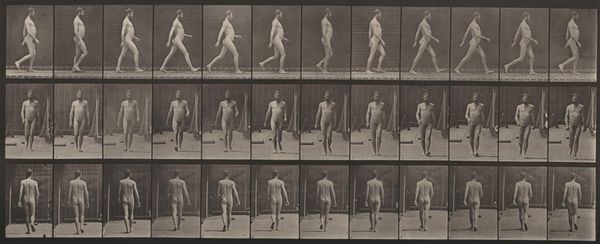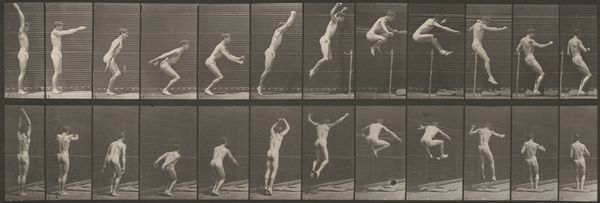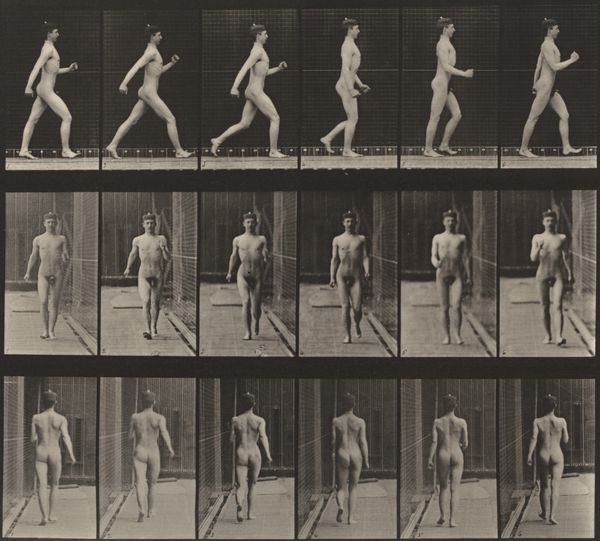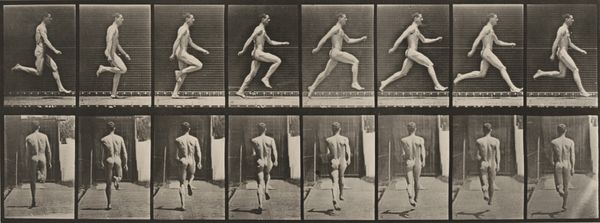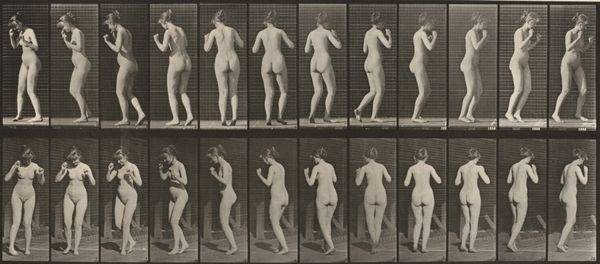
print, photography, gelatin-silver-print
#
action-painting
# print
#
impressionism
#
sculpture
#
figuration
#
photography
#
gelatin-silver-print
#
nude
Dimensions: image: 17.05 × 43.6 cm (6 11/16 × 17 3/16 in.) sheet: 48.35 × 61.3 cm (19 1/16 × 24 1/8 in.)
Copyright: National Gallery of Art: CC0 1.0
Editor: Here we have "Plate Number 339. Boxing, open hand," a gelatin silver print from 1887 by Eadweard Muybridge. The progression of motion is fascinating; it almost feels like a storyboard. What aspects of this work stand out to you? Curator: Note how Muybridge divides the scene into discrete frames. This creates a serial, almost mechanical repetition of forms. Consider the lines formed by the bodies, echoing in each panel yet subtly different. Editor: The lines create a sense of dynamism, even though it's a still image. Do you think the sequential format influences the interpretation of the subject matter itself, boxing? Curator: Certainly. It deconstructs the act into component movements, removing the spontaneous and chaotic elements of live combat. It emphasizes the sculptural qualities of the human form in action, abstracted into segments of observation. Consider how the repetition creates a rhythm. Editor: So it becomes less about the aggression of boxing, and more about studying movement in isolation? Curator: Precisely. The sequential analysis highlights the underlying geometry, reducing the figures to studies of mass, volume, and distribution of weight through space. Observe the grid created by the backdrop and how this structure informs the figures within it. Editor: It is amazing how it uses repetition to extract all other connotations. Thanks. This focus on form reveals something very essential. Curator: Indeed. This analysis shifts attention away from narrative, enabling a much more precise appreciation of the form itself. A helpful process in engaging visual art.
Comments
No comments
Be the first to comment and join the conversation on the ultimate creative platform.
